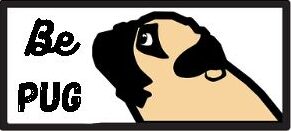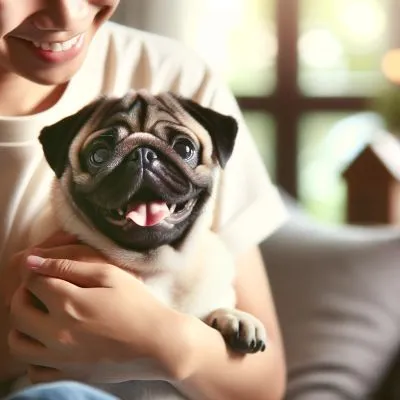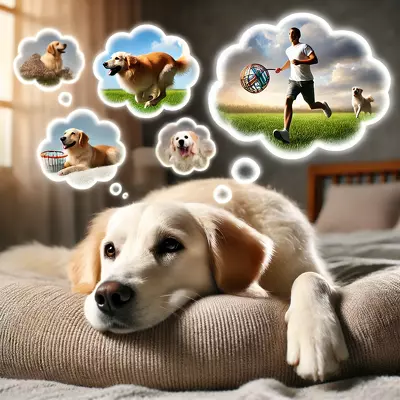The Fast-Track Puppy Guide: Uncovering the Quickest Way to Potty Train a Puppy

Introducing the art of swiftly teaching your furry friend essential bathroom etiquette. For new pet owners, mastering the art of puppy potty training can be a challenge. However, there are proven methods that ensure faster results. With a blend of consistency, patience, and the right techniques, it’s possible to significantly reduce the time spent on this crucial phase of puppyhood. Discover the secrets behind the fastest way to potty train a puppy and set your canine companion on the right path.
I. Puppy Potty Mastery: The Quickest Routes to Success
A. Importance of efficient potty training
Potty training is often one of the first significant challenges a new pet owner encounters. Efficient training isn’t just about avoiding accidents in the home; it’s about building a bond of trust and understanding with your new puppy. Successfully teaching your puppy where and when to do their business can set a positive tone for further training and daily routines.
There are several benefits of effective potty training:
- Creates a Healthy Environment: A well-trained puppy ensures a clean living space, free from harmful bacteria and unpleasant odors that can arise from frequent accidents.
- Strengthens Pet-Owner Relationship: Consistent and positive training methods foster a bond of trust between the pet and the owner. It reduces frustration for the owner and confusion for the puppy, making the relationship more harmonious.
- Promotes Mental Well-being of the Puppy: Puppies thrive on routine and structure. Knowing when and where to go potty can give them a sense of security and reduce anxiety.
B. Common challenges faced by puppy owners
Though many guides and resources are available, puppy owners often need help with common hurdles during the potty training journey. Recognizing these challenges can equip an owner with the knowledge to overcome them swiftly:
- Irregular Schedules: Puppies, like babies, thrive on consistency. Changing their feeding or potty times daily can create confusion, leading to more accidents.
- Missed Signs: Puppies typically display certain behaviors when they need to go. Not recognizing or misinterpreting these signs can lead to missed potty opportunities.
- Over Expectations: Many owners expect their puppies to understand and follow house rules immediately. However, depending on their age and previous training, puppies might take time to get accustomed.
- Inadequate Supervision: During the initial stages, puppies require close monitoring to prevent accidents and ensure they are directed to the right spot.
- Negative Reinforcement: Reacting negatively or punishing a puppy after an accident can create fear and confusion, making the training process longer.
Understanding and anticipating these challenges can make the journey smoother for the puppy and the owner. With patience, consistency, and the right strategies, achieving potty mastery becomes attainable.
II. Understanding Puppy Behavior
A. Signs a puppy needs to relieve itself
Recognizing the cues a puppy gives before it needs to potty is paramount for successful training. Common signs include:
- Circling and Sniffing: Just before they need to go, puppies often sniff around and might go in circles, looking for the right spot.
- Restlessness: A puppy may become anxious, pacing, or whining when it feels the urge.
- Going to a Previous Spot: If they’ve relieved themselves inside before, they might revisit that location.
- Whining or Scratching at the Door: A more trained or older puppy may signal they wants to go outside.
- Sudden Interruption in Play: If a puppy suddenly stops playing or interacting, it might be an indication.
B. The role of a puppy’s age in training
Puppy age is a significant factor when it comes to potty training. The younger the puppy, the less control they have over their bladder:
- Young Puppies (8-12 weeks): At this age, puppies must relieve themselves frequently, sometimes as often as every hour or after meals, play, and waking up from naps.
- 3-6 months: Puppies start gaining more control over their bladder but still require regular breaks.
- Six months and above: By this age, many puppies can hold it for longer, often up to 6 hours. However, regular breaks are still essential.
C. Typical bladder control timelines
Bladder control varies with age, and while not definitive, here’s a general guideline:
- 8-10 weeks: Every 1-2 hours, including nighttime.
- 3-4 months: Every 2-4 hours.
- 5-6 months: Every 4-5 hours.
- Over 6 months: Every 5-6 hours, though some can hold longer overnight.
III. Quickest Way to Potty Train a Puppy
A. Selecting the ideal location
Choosing the right potty spot is the first step:
- Consistency: Use the same spot every time. This helps the puppy associate the location with the act.
- Accessibility: The spot should be easily accessible, especially for younger puppies who can’t hold it long.
- Safe and Quiet: An area free from distractions will help the puppy focus on the task.
B. The power of a consistent schedule
Maintaining a strict schedule is key:
- Feeding Time: Feed your puppy at the same times daily. This regularity aids in predicting potty times.
- Potty Breaks: Take them out first thing in the morning, before bedtime, and after meals, naps, or play.
- Observation: Monitor your puppy’s patterns to adjust the schedule accordingly.
C. Positive reinforcement techniques
Encouraging good behavior is more effective than punishing the bad:
- Praise: Whenever your puppy does its business at the right spot, give verbal praise.
- Treats: Reward them with a small treat after they’re done.
- Affection: A gentle pat or rub shows them they’ve done well.
D. Handling accidents with grace
Accidents will happen, and it’s essential to handle them positively:
- Immediate Correction: If you catch them in the act, interrupt with a gentle “no” and take them to the potty spot.
- Clean Up Thoroughly: Use enzyme-based cleaners to remove scent traces, reducing the chances of them using the same spot again.
- Avoid Punishment: Yelling or punishing after the fact doesn’t help. It can confuse and scare the puppy, making training more challenging.
IV. Advanced Tips and Tricks
A. Night-time training strategies
Puppies’ bladders are small and often need relief during the night. But with time and a few strategies, you can help them adapt:
- Last Call Before Bed: Ensure to take your puppy out right before bedtime to empty their bladder.
- Limit Water Intake: While keeping puppies hydrated is important, try limiting water a couple of hours before bed to reduce nighttime urges.
- Use a Crate: Most dogs avoid soiling in their sleeping areas. A right-sized crate can discourage nighttime accidents.
- Respond Quickly: If your puppy whines or seems restless at night, it might signal a potty break. Attend to it promptly.
B. Addressing territorial marking
Territorial marking is a natural canine behavior but can be problematic indoors:
- Neuter/Spay: This can reduce the urge to mark, especially in males.
- Clean Marked Spots Thoroughly: This ensures the puppy doesn’t return to mark the same areas.
- Distract and Redirect: If you notice your dog preparing to mark, distract it with a toy or command and redirect its attention.
- Positive Reinforcement: Reward your dog when it urinates outside, reinforcing that it’s the appropriate place to go.
C. Training during travels and trips
Traveling can disrupt a puppy’s routine. However, you can ensure a smoother journey with some preparation:
- Portable Potty: Consider getting a portable dog potty for situations where stopping isn’t feasible.
- Maintain Schedule: Keep feeding and potty breaks consistent as much as possible.
- Frequent Breaks: If on a road trip, stop frequently for your puppy to relieve itself and stretch.
- Comfort Items: Bring items from home, like a favorite toy or blanket, to give your puppy a sense of familiarity and comfort.
V. Common Mistakes to Avoid
A. Over-punishing after accidents
Reacting negatively can instill fear and hinder the training process:
- Stay Calm: Understand that accidents are part of the learning curve.
- Focus on Reinforcement: Instead of punishing bad behavior, emphasize reinforcing the good.
- Clean Properly: Instead of getting angry, clean the spot effectively to prevent repeat incidents.
B. Inconsistent training schedules
Consistency is the cornerstone of effective training:
- Stick to Routines: Regular feeding and potty breaks help your puppy understand expectations.
- Avoid Changing Spots: Consistently use the same location for potty to build a strong association.
C. Neglecting puppy cues and signals
Failing to recognize when your puppy needs to go can lead to accidents:
- Learn Their Behavior: Pay close attention to understand their specific cues.
- Respond Promptly: When they show signs, act quickly to avoid accidents.
- Avoid Distractions: Especially during the early stages, stay attentive to your puppy and avoid getting sidetracked by other activities.
FAQs
Q: How long does it typically take to potty train a puppy using the quickest methods?
A: It varies by breed and individual dog, but many puppies can be substantially trained within 4 to 6 weeks using consistent and efficient methods.
Q: Can older dogs also be trained using these quick methods?
A: While younger puppies often learn faster due to their adaptability, older dogs can still be trained efficiently using consistent techniques.
Q: Is it necessary to use treats as rewards every time my puppy uses the potty correctly?
A: While treats are effective positive reinforcement, alternating with verbal praise and physical affection can also be effective. The key is consistency in rewards.
Q: What if my puppy keeps having accidents at night?
A: Consider last-call potty breaks right before bed, limiting water intake in the evening, and using a crate. Night-time accidents are common initially but usually decrease with age and consistent training.
Q: How do I handle my puppy’s accidents without hindering training?
A: Stay calm, clean the area thoroughly to remove the scent, and avoid punishing the puppy. Instead, focus on reinforcing positive behavior.
Q: Is it possible to potty train a puppy when living in an apartment?
A: Absolutely. While it requires more diligence, techniques like indoor potty areas, regular outdoor breaks, and consistency can achieve successful results.
Q: How often should I take my puppy outside during the early stages of training?
A: For very young puppies (8-12 weeks), it’s recommended to take them out every 1-2 hours after meals, playtime, and waking from naps.
Conclusion
A. Reiterating the significance of patience and consistency
The journey to potty training success is paved with patience and consistency. While seeking the quickest way to achieve results, it’s essential to remember that every puppy is unique. Regularity in schedules, rewards, and routines ensures the message is clear and understood.
B. Celebrating small victories in the journey
Every time your puppy gets it right, it’s closer to full mastery. Celebrate those moments, whether it’s the first accident-free day or the first time they signal to go out. These milestones are encouraging signs of progress.
C. Encouragement for continued application of the quickest methods
While the initial stages of potty training can be challenging, persistence pays off. Stay dedicated to the techniques, adapt as needed, and apply the quickest methods. In time, you’ll have a well-trained, confident puppy ready to enjoy countless moments with you.
Suggested Reading
Numerous books and websites provide advice, tips, and techniques to ensure you and your puppy have a positive potty training experience. Some of the most recommended resources in the puppy training community include:
- Puppy Potty Training in 7 Days by Sally C. Austin: This book provides a step-by-step guide to training your puppy in 7 days. It covers crate training, creating a potty schedule, and rewarding your puppy for good behavior.
- The Potty Training Puppy Handbook by Trisha McConnell: This book covers everything you need to know about potty training your puppy, from crate training to housebreaking. It also includes information on common potty training problems and how to solve them.
- Potty Training for Dummies by Sophia Yin: This book is a comprehensive guide to potty training your puppy, written in an easy-to-understand way. It covers the basics of potty training and more advanced topics, such as dealing with accidents and potty training older dogs.
- The Puppy Potty Training Guide website provides a wealth of information on potty training puppies, including articles, videos, and a forum where you can ask questions and get advice from other puppy owners.
Arming oneself with quality resources is often half the battle in ensuring a smooth potty training journey. Each resource offers unique insights, catering to different learning styles and preferences. Whether you’re searching for a rigorous 7-day plan or seeking solutions to specific challenges, there’s something in the list to address your needs.






